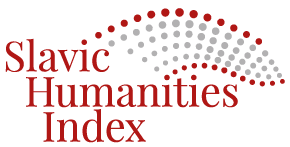Raspad multietničkih zajednica / Disintegration of Multi-Ethnic Communities
stvaranje nacionalizama / The Birth of Nationalisms
DOI:
https://doi.org/10.46352/23036990.2021.391Keywords:
empire, nationalism, Balkan, Socialist Federative Republic of Yugoslavia, fall of communismAbstract
In the end of the 1980s and during the 1990s, the religious communities in Yugoslavia wholeheartedly critiqued the ‘totalitarian communist government’ claiming that it had imposed, from the above, the ideological restraints and suppression of religious freedoms. Therefore, many religious elites accepted the process of Western European liberalization in order to win the fight for religious freedom, as well as to affirm its role and power through free elections. In the anti-communist context, the religious elites insisted on the return to tradition, to ancestors, to the past, and mostly neglecting the narrative of ‘the new future.’ This paper examines the way in which nationalism – which establishes its power through the use of religious symbols in order to unify and mobilize the masses— came to existence after the disintegration of a multi-ethnic state, such as the Ottoman and Austro-Hungarian Empire, on the one side, and the Socialist Federal Republic of Yugoslavia, on the other. In such a way, religious universalism reduces itself on the particular national myth, which, through the symbol of the victim, constructs the ‘chosen people’ whose politics is not based on joining, connecting with other people, but on separation and division.
Downloads
Downloads
Published
How to Cite
Issue
Section
License
Copyright (c) 2021 Journal of the Faculty of Philosophy in Sarajevo / Radovi Filozofskog fakulteta u Sarajevu, ISSN 2303-6990 on-line

This work is licensed under a Creative Commons Attribution-NonCommercial-ShareAlike 4.0 International License.













